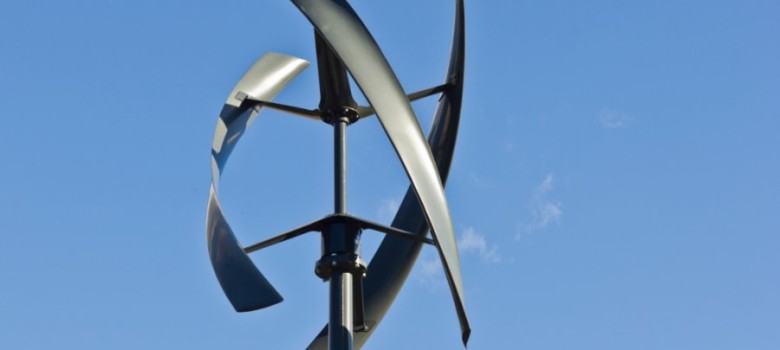
How does a wind turbine work?
When air hits the wind turbine, the blades spin, converting the wind’s kinetic energy into mechanical energy. This rotary motion then travels down the shaft and drives a generator where the electricity is produced. Typically most wind turbines are mounted in the horizontal plane (like the propeller of a plane), and therefore it is key the blades are facing directly into the wind.
The yaw angle is the difference in angle between the wind direction and the direction in which the rotors are facing. The aim is to minimise the yaw angle as much as possible, so most residential wind turbines tend to have tails which orientate the turbine to best capture the wind. Wind turbines should therefore be able to rotate 3600 on yaw bearings.
The turbine
There are 2 main styles of urban wind turbines:
Horizontal Axis Wind Turbines (HAWT)
This is a propeller type rotor mounted on the horizontal axis. As mentioned previously, the blades need to be aligned with the wind and this is done by either a simple tail, or an active yaw. These are more efficient at producing electricity than VAWTs however they are impacted more by changes in wind direction.
Vertical Axis Wind Turbines (VAWT)
These are aligned in the vertical axis (like the rotor blades on a helicopter). These are only really deployed within urban areas, where the flow of air is more uneven. Due to their alignment, wind direction has little impact on this type of turbine; however it is apparent that these are less efficient than their HAWT cousins.
In addition to HAWTs and VAWTs there are hybrid turbines that are cylindrical (imagine a gyroscope) – such as the energy ball.
At TheGreenAge, we suggest sticking with the HAWTs as they are the more proven technology, and are offered by more suppliers, so you will be able to get better value for money.
Most turbines tends to have two or three blades, two bladed turbines are cheaper but suffer from blade chatter which puts stress on the system, which can lead to increased maintenance further down the line. If you can afford to get a three bladed turbine, we suggest doing so, as these don’t suffer from this problem at all.
The tower
Three types of tower exist: tilt-up, fixed guyed and free standing. The purpose of these towers is to position the turbines in the best possible position to take advantage of the wind.
Tilt-up towers are held in position by four guy ropes one of which can be released, allowing you to lower the tower, so you can work on the turbine.
Fixed guyed towers are similar to tilt-up towers, except they are permanently fixed in place so you need to climb the tower to do any maintenance.
Free standing towers have no guy ropes. As such they require a very solid foundation. Therefore these are certainly the most expensive, but may well be the most aesthetically pleasing.
The inverter
Most wind turbines produce AC current, so this should be able to be directly fed into your home and the grid, however the voltage and frequency of the power produced is very erratic, so an inverter is used to convert the erratic AC to DC, then back to a smoother AC which can be synchronised with the grid, or for use directly into your home. Battery-based wind turbines normally operate at 12 or 48 Volts, and therefore the inverter must also act to convert this relatively low voltage to high voltage (UK mains is 240 volts). Battery-less systems may produce electricity with a voltage significantly higher (100 volts or more). Therefore in this situation, the inverter needs to be able to handle this higher voltage.
Batteries
In most wind turbine systems, the electricity does not power any appliances directly. Instead the electricity produced is stored in deep-cycle lead acid batteries which look very similar to the ones found in most cars today (although structurally different). The two most popular types of battery are GEL and Absorbed Glass Mat (AGM), which store the charge very well and do not degrade nearly as fast as the common lead acid (wet cell) battery. Both types of batteries are designed to gradually discharge slowly and recharge 80% of their capacity hundreds of times.
An automotive battery is a shallow-cycle battery, and this is designed to discharge only about 20% of its electricity so is unsuitable for solar photovoltaic cell set-up. The reason is that if any more than 20% is drawn more than a few dozen times, it will get damaged and no longer take charge.
Wind turbine batteries tend to operate at 12v, and can be arranged in banks (multiple batteries), increasing the storage potential of your wind system set up. A bank of batteries organised in a series increases the capacity of your storage but also increases the voltage delivered from your bank; while multiple batteries organised in a parallel circuit increase the capacity, but the voltage stays the same.
Charge controllers
Charge controllers are used in wind turbine systems to prevent the batteries from being overcharged. If you decide to implement a grid tie system, a charge controller is not necessary, as any excess electricity that you don’t use at any particular moment is sold directly back to the grid. However, for any battery setup, a charge controller is necessary as it prevents damage to the battery by monitoring the flow of electricity in and out. If your system overcharges the battery it will damage it. The same is also true if you completely discharge all the charge held within the battery.
Most charge controllers associated with wind turbines have dump load capability associated with them. This allows any additional charge to be diverted from the batteries when they are full, potentially to a hot water heating system (so the electricity is not completely wasted). Obviously if you are connected to the grid, this electricity would instead be sold there, providing you with an additional income stream.
Most charge controllers are also equipped with maximum power point (MPPT) charging. The principle of MPPT is to extract the maximum available power from the wind turbine by making them operate at the most efficient voltage (known as the maximum power point voltage). The algorithm included in the MPPT charge controller compares the output from the wind turbine with the battery voltage and then fixes it at the best charging voltage, to get the maximum charge into the battery.
Safety equipment
Disconnects are simply switches that allow you to isolate parts of the system so you can troubleshoot or repair faulty parts without the risk of being electrocuted. In addition many wind turbine systems are grounded, so that if there is surge in current anywhere in the system it is safely dissipated rather than damaging the system or more importantly you!
Installing a wind turbine
Are you thinking about installing a wind turbine at home? We have scoured the country for the best tradespeople, so that we can make sure we only recommend those we really trust.
If you would like us to find you a local installer to help install a wind turbine at home, just fill in the form below and we will be in touch shortly!



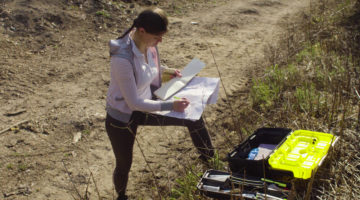
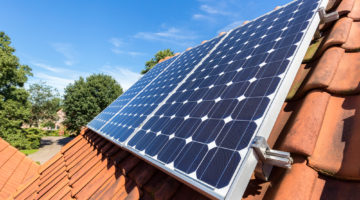
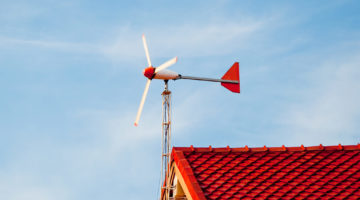
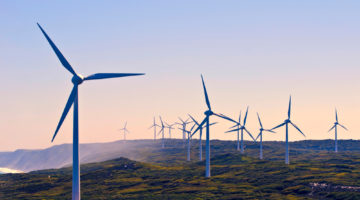





Useful